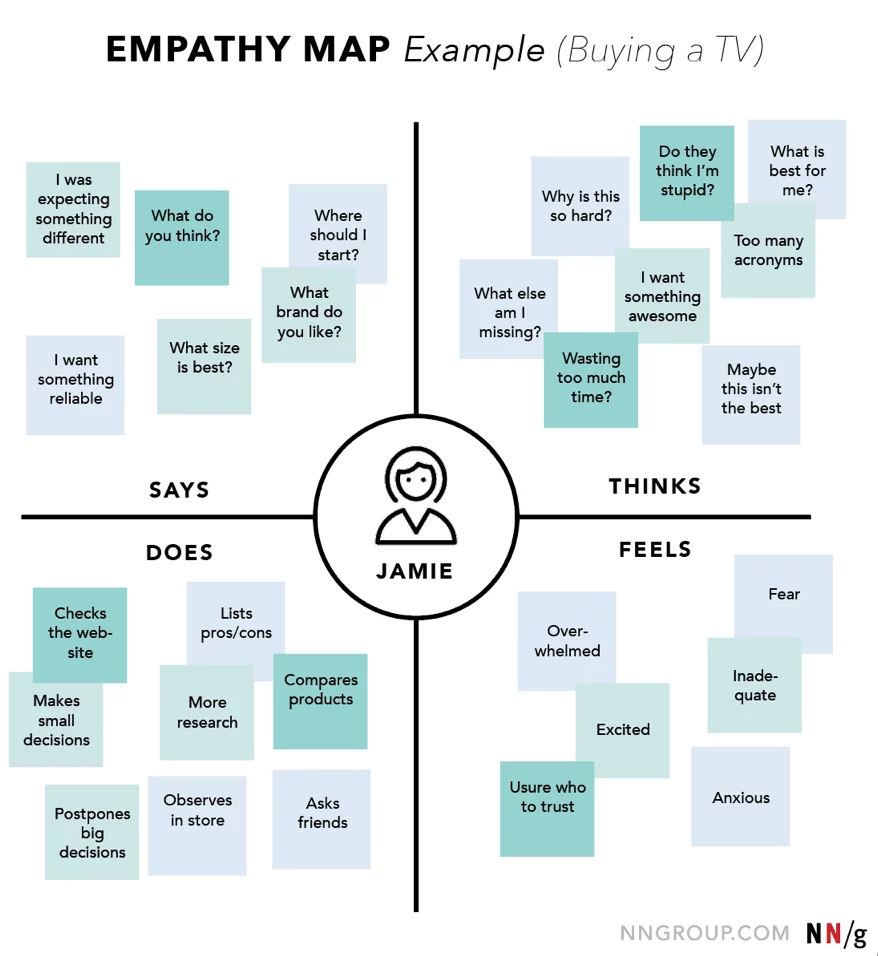User experience, or UX, plays an essential role in cross-functional software development teams. UX Designers, Product Designers, and other UX positions are vital for understanding the customer and charting a roadmap that best meets their needs, wants, and desires.
Unfortunately, many development teams don't fully understand these UX roles and their importance. Some companies use the terms "UX" and "UI" interchangeably, meaning UX roles design UIs. Other companies may have UX teams but continue to prioritize business goals over user needs.
Let's look at a few UX rules that every development team should understand to ensure everyone's on the same page.
UX plays a vital role in cross-functional software development teams, but these roles are frequently misunderstood. Share on X#1. UX != UI
The terms "UI" and "UX" are quickly becoming misused buzzwords. While the words are related, they have different objectives and scopes.
User interfaces, or UIs, refer to the elements and approaches that enable users to interact with a system. For example, UI designers will focus on layouts, color schemes, and specific HTML elements.
On the other hand, user experience, or UX, refers to how a user interacts with and experiences a product on a high level. For example, a UX team might watch users go through a workflow to ensure it's easy to use.
If you're building a new website, you may need a UI designer to construct each screen, button, and interaction. If you want to optimize conversions, you may need a UX designer to refine workflows.
#2. Don't Skip UX Research
User empathy—or the ability to understand and share a user's needs and motivations—is the most critical part of user experience research.
Most software solves a problem, and it's tempting to skip user research and move straight into ideating and prototyping solutions. But, teams that ignore user research often fail to achieve product-market fit.

Example of an Empathy Map - Source: NN Group
UX research should begin with Empathy Maps that explore how users are doing, seeing, hearing, thinking, and feeling. In the simple 30-minute exercise, the team can gain a much better understanding of the user.
The next step is building a Journey Map that explores how customers feel at each workflow step. These feelings include pain points, happy moments, questions, actions, and other opportunities.
#3. Start with Low Fidelity
User experience research focuses on high-level interactions, whereas UI design focuses on low-level elements.
UX teams should use low-fidelity mock-ups and avoid the temptation to over-design. For example, Balsamiq makes it easy to create notoriously low-fidelity designs to save time and iterate more quickly.
Low-fidelity mock-ups fall between wireframes and prototypes. By removing design details, they force users to focus on layout and flow rather than intricate details before investing in a prototype.
Low-fidelity mock-ups are equally valuable for guiding conversations with stakeholders. They can help avoid the temptation to get buried in the weeds and ensure that meetings are productive.
#4. Keep It Simple
Simplicity is a fundamental principle of UX design. After all, simple and elegant products are a joy to own and use.
There are several reasons to keep things simple:
- Attention spans are shorter than ever.
- Simple software is convenient and enjoyable.
- Complicated products have more feature creep.
Of course, it's possible to oversimplify a product. For example, no piece of music uses every piano key and petal, but oversimplifying the musical instrument would make it much less versatile.
The irony is that it's challenging to create a simple user experience. In addition to avoiding feature creep, you must constantly talk to customers and find ways to streamline the experience based on their actions.
#5. Use Feedback Loops
User experience research is an ongoing process, meaning that it's critical to establish continuous feedback loops.
The Net Promoter Score (NPS) is a common strategy for generating customer feedback. By collecting these ratings regularly, UX teams can quantitatively measure customer happiness in real-time.
After identifying issues with NPS, user interviews are an excellent way to gather more in-depth feedback. Many companies incentivize users to opt-in to UX research and regularly reach out to them for feedback.
The good news is that many tools can automate these processes. For example, Customer.io makes it easy to build funnels to prompt customers for NPS scores and schedule user interviews.
Try a Second Set of Eyes
Small to medium-sized organizations may not have the budget for a dedicated user experience team. In addition, some groups find it beneficial to seek outside input to avoid any biases. The good news is that there are consulting groups that can help!
At Sharkbyte, we provide Team Augmentation services designed to supercharge your team with experts. Many companies use our senior-level developers to add staffing to existing projects, but we can also help with user experience research and design.
Contact us to schedule a free consultation!
The Bottom Line
User experience teams are the lifeblood of successful software companies. By understanding the nuances of how these teams operate, you can avoid conflicts and ensure that everyone is on the same page, and maximize your project's success.
The best teams include UI Designers and UX Designers to build intuitive user interfaces and enjoyable and straightforward workflows. If you don't have the budget for a full-time UX team, we provide Team Augmentation services to step in and provide the expertise that you need!



